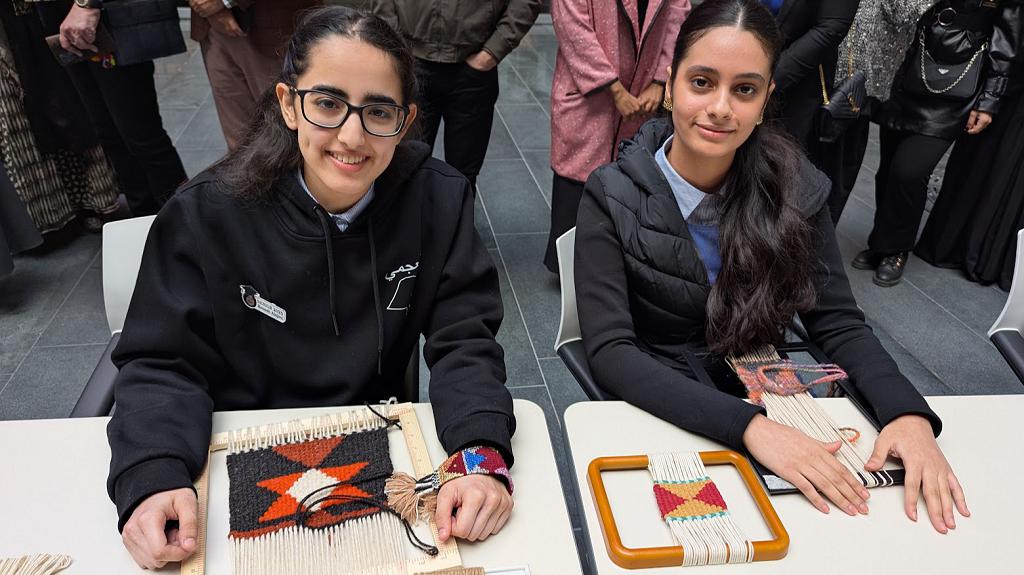The advent of generative AI threatens to widen the class divide of screen addiction. Everyone should have access to the skills necessary to take life into their own hands.
It’s becoming increasingly important that everyone has access to craft in their life. As more human capacity becomes outsourced to machines, our very sense of self requires that we have the direct experience of making. This is starkly demonstrated by recent research about the affect of screens on cognitive development.
According to the latest studies in neurology, the mind is like a garden. Regular pruning is necessary for life to flourish, and this is especially important in childhood. Proper cognitive development involves strengthening synaptic pathways at the expense of unnecessary ones.
Excessive screen time can inhibit cognitive development on several fronts. According to an article in Nature, overexposure to screens interrupts the synaptic pruning process. Too much pruning is associated with schizophrenia and too little with autism. Excessive screen time is also associated with inhibited growth in grey and white matter, particularly in the frontal lobe, where our capacity for planning and agency lies. Later in adolescence, the dopamine addiction fostered by video games also inhibits social learning.
Thanks to the advocacy of Jon Haidt, the impact of screens on child development has become much better known. But this is more than a generational issue. It unequally affects people of lower socioeconomic status. Reduced access to extracurricular activities in poorer communities is associated with more time spent on devices.
How do we address this? One key to good synaptic pruning is physical activity. The discipline instilled by learning to manipulate the physical world helps select particular neural pathways for strengthening. Besides banning screens, development can be encouraged by education in craft skills. Learning a craft has demonstrable benefits for mindfulness. Craft skills encourage active engagement with the world and promote the virtues of patience and focus necessary for agency.
In the bigger picture, this is an issue of social justice. Amartya Sen’s capability approach offers a holistic framework for rights. According to Sen, justice is not just about access to resources; it is also about the capacity to use those resources in order to live a full life. We already accept this principle with the universal provisions for literacy and numeracy. This can be extended to learning to play a musical instrument, participate in sports, and master a craft.
A right to craft is an important complement of the essential capacities necessary for human flourishing. The purposeful manipulation of material lays down the structures for thinking. It helps us “grasp” ideas, “weave” a story and “nail” an argument.
The Right to Craft includes the following elements:
- Dignity through creative expression
- Capacity to participate culturally
- Preservation of cultural heritage
- Building community
- Economic empowerment
- Sustainable development
- Reduction in stress and capacity to focus
Practically, for the Right to Craft to work as a tool, it needs support from institutions such as UNESCO and the World Crafts Council. Other bodies can then use official backing to justify providing craft resources.
This is particularly necessary in the schoolroom, where it competes with demands for technology training such as coding. However, AI is now supplanting manual coding. The rapid advancement of AI challenges educators to prepare students for unique human capacities that cannot be replaced, such as judgement and empathy.
Craft should be part of a national curriculum. To be expected, Scandinavia leads the way. In Sweden, all students complete a core subject of slöjd, including woodworking and textile crafts. Growing nationalism is encouraging others to follow. I witnessed the benefits of national craft education when I visited Kuwait recently. In Kuwait, Every grade 8 child learns the Art of Weaving, which includes the iconic Sadu technique. The pride of the students I spoke to in learning a craft of their Bedouin forbears was palpable.
Local governments can use the “right to craft” as a tool to set up local craft hubs. Citizens can use these for more active engagement and draw on the established value of craft to bring people together. A good example is the Keep Well program in Ireland, which sought to counter the isolation of COVID by facilitating community craft projects such as the making of a St Brigid’s cross.
Of course, craft is not the only necessary condition for human flourishing. We can learn from other campaigns, such as an Australian organisation to promote music education, in order “to lift the spirits, build collaboration and a sense of belonging, to get the creative juices flowing, and to simulate the brains and lift attainment in literacy and numeracy for our students.” From a broader cultural perspective, it’s worthwhile to look to cultures such as Uzbekistan, where the attainment of 40 hunar (skills) is a key achievement for all people in life.
It’s worth noting, of course, that a Right to Craft promises significant benefit to specialist makers. As recommended in the Value of Craft Report, there are growing opportunities in adult education and emerging craft therapy. This need not replace the creative work at the bench, which is the main attraction to craft, but it can help sustain a longer-term career.
Previously, there was concern about a class divide in digital literacy, which involves skills such as computer coding and software installation. But as artificial intelligence takes on more of those capacities for us, material literacy becomes increasingly important to retain a sense of agency. We risk a world where only wealthier people can access extracurricular activities, such as craft classes, to help develop and maintain their sense of self and cognitive functioning. This is an inversion of the historical situation, where manual workers were lower in the hierarchy. Today’s underclass is more likely to be captive to the screen and its addictive algorithms.
It’s critical for all people in our society to have the opportunity to learn how to craft.
What do we want? Craft! When do we want it? Forever!


